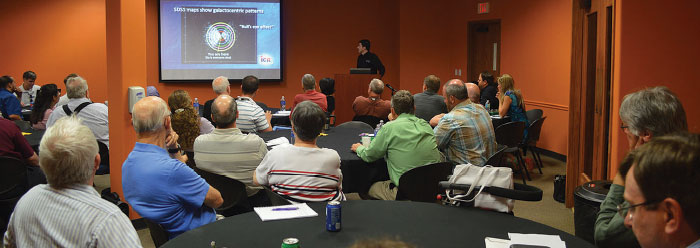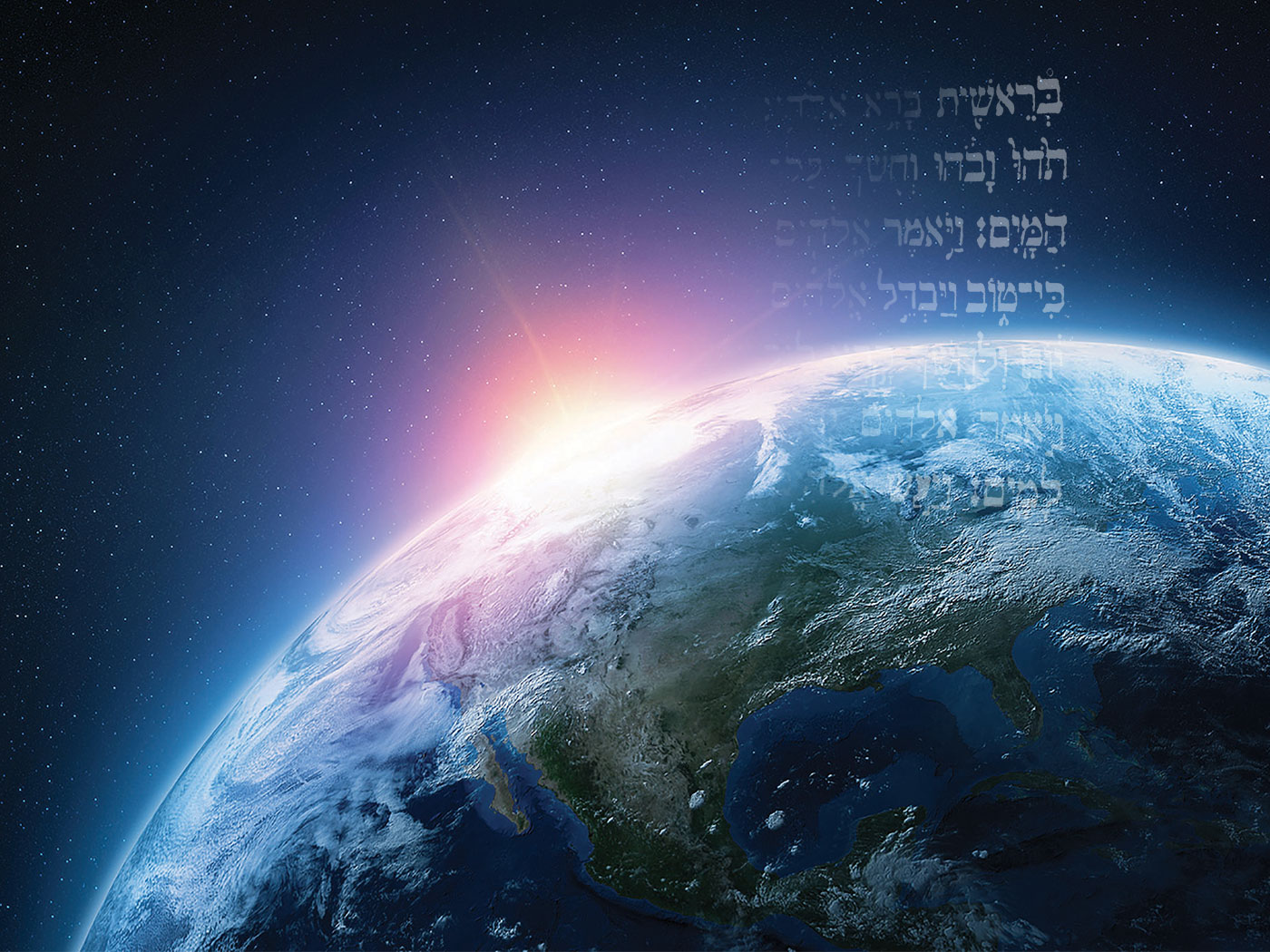We do many things here at the Institute for Creation Research, but the core of our ministry is original scientific research that relates to the topic of origins. We study the universe for the glory of God. We love to share our results with others and see their delight as they realize how science powerfully confirms the Bible. To that end, we publish our research in peer-reviewed science journals so that our work may be scrutinized by other scholars and any remaining problems or oversights can be exposed and removed. If none are found, we then summarize our research in lay-level literature such as Acts & Facts magazine or the various books we publish.
Contrary to what is sometimes reported, we do not “try to prove the Bible using science.” We recognize that the Bible is the inspired Word of God and is thus inerrant in all its affirmations. The Bible is actually the foundation for all scientific inquiry because it delineates the necessary conditions that must exist in the universe for science to be possible and logically justified. In other words, science is possible because God upholds the universe in a consistent and rational way that the human mind can at least partially understand. We do research to honor God, expecting to learn something about the way in which He rules over creation. As Christians who love science, we are happy to join with others who share our passion, such as the Creation Research Society (CRS).
The CRS is a nonprofit society of professional scientists who share an interest in biblical origins.1 Founded in 1963 to promote peer-reviewed research from a biblical perspective, the society began publishing the Creation Research Society Quarterly (CRSQ) in 1964. CRSQ is a peer-reviewed journal dedicated to research that confirms Genesis and challenges evolution. The CRS also hosts quasi-annual meetings in which its members present and critique preliminary results of their research. The ICR science team participated in the August 2014 meeting and was responsible for a third of all the presentations.
Dr. Jeff Tomkins presented some of his original research on the alleged chromosome 2 fusion site in Human DNA. Since apes have 24 pairs of chromosomes and humans have only 23 pairs, most evolutionists have maintained that two chromosomes must have somehow merged in one of our ape-like ancestors. But Dr. Tomkins showed that the alleged fusion site is actually a regulatory element in the middle of a functional gene.2 This strongly challenges the evolutionists’ claim.
Dr. Nathaniel Jeanson presented some unexpected preliminary results involving his research on speciation and extinction. Creationists have long known that God did not need to bring every species of air-breathing land animal on board the Ark. Only the basic created kinds were needed (Genesis 6:19-20; 7:14-15). A kind is a group of biologically related organisms and often—though not always—corresponds to the family level of our modern taxonomic system. A species is a group of organisms that normally interbreeds and produces fertile offspring. Over the course of time it is possible for one kind to split into multiple species. This is not evolution in a Darwinian sense because the animals always remain the same basic kind.
We know from breeding experiments that cats, for example, are all part of the same created kind. In other words, there were only two cats on Noah’s Ark from which all modern cats are descended. But there are many species of cats today. Lions and tigers are classified as two different species since they do not normally interbreed (though they can), but they are still cats. By studying vast amounts of genetic data, Dr. Jeanson has begun to unravel clues about the rate of speciation of organisms after the Flood. This will begin to answer questions such as, “Approximately when did lions and tigers become distinct species?”
Dr. Tim Clarey presented his preliminary findings on the analysis of stratigraphic columns and the mapping of megasequences—large-scale sedimentary packages that cover the continent in succession. The thicknesses of the various layers and the fossils found within them provide clues about the dramatic happenings on the North American continent during various stages of the Flood. For example, why do we find dinosaur fossils mainly in the western states and only in later Flood sediments? Why do we find mostly marine fossils only in the earliest Flood sediments? His results are starting to provide answers to some of these questions and further our understanding of Flood dynamics.
Dr. Jake Hebert and I presented some preliminary findings on our analysis of Sloan Digital Sky Survey (SDSS) data. The SDSS is a massive research project to map the positions of galaxies in our universe. Maps produced using SDSS data seem to show a series of giant spherical shells of galaxies that are centered roughly on our galaxy. It’s as if galaxies primarily exist at preferred distances from ours with fewer galaxies between these spherical shells. If true, this would be devastating evidence against the Big Bang model, which is predicated on the assumption that our position in space is not unique. Could this bull’s eye effect be real, or is it a selection effect?
A selection effect is a bias in scientific analysis that is caused by the limitations of the data set. For example, bright galaxies are easier to detect than faint galaxies. Therefore, bright galaxies tend to be overrepresented in maps of the universe, simply because such maps inevitably miss many of the faint galaxies. There are several different ways to mathematically deal with this bias, and we demonstrated two of them at the CRS meeting. We are now using our bias-corrected results to see if galaxy motions through space can cause the appearance of these spherical shells. So is our galaxy really in the middle of giant spheres of galaxies? We’ll keep you posted with further results.
Besides the ICR presentations, I was particularly impressed with a new study done by Keith Davies, showing that supernova remnants confirm a young universe. When stars explode, they leave an expanding shell of hot hydrogen gas—a supernova remnant. Since we know the approximate rate at which supernovae happen, the number of supernova remnants in any given galaxy should be proportional to the galaxy’s age. And current estimates are very consistent with 6,000 years but wildly inconsistent with millions or billions.
That claim has been made before, but Davies showed that recent data strongly bolster the claim, since the new observations are of much higher quality than those from decades past. His latest results are still preliminary and unpublished, so we should be cautious at this point. Nonetheless, based on the data presented, I suspect that the evolutionists and other old-earthers will have a very difficult time trying to explain away this new evidence.
Several other fascinating lines of research were presented at the CRS meeting, from reports of soft tissue in dinosaur remains to the extinction of the Spanish flu. Space in this article does not permit a summary of them all. Suffice it to say that scientific research continues to confirm biblical creation. It is a very exciting time to be a biblical creationist. Conversely, it appears to be a very bad time to be an evolutionist or old-earth creationist.
In Romans 1:20, Paul explains that the evidence of God from creation is so clearly seen that those who deny it have no excuse. Those who profess to repudiate creation are suppressing what they know to be true (Romans 1:18). How much more inexcusable is such rebellion today in light of new scientific research! Consider, at the time the book of Romans was written, people did not know about DNA or chromosomes. They didn’t know about mutations, the extent of megasequences, the organization of galaxies, or supernova remnants—all lines of evidence that confirm creation. If there were no excuse for denying God then, how much more so today in light of modern scientific discoveries!
References
- Persons without a post-graduate degree in science may join the Creation Research Society as a sustaining, but non-voting, member.
- Tomkins, J. P. Alleged Human Chromosome 2 “Fusion Site” Encodes an Active DNA Binding Domain Inside a Complex and Highly Expressed Gene—Negating Fusion. Answers Research Journal. 6 (2013): 367-375.
* Dr. Lisle is Director of Physical Sciences at the Institute for Creation Research and received his Ph.D. in astrophysics from the University of Colorado.







